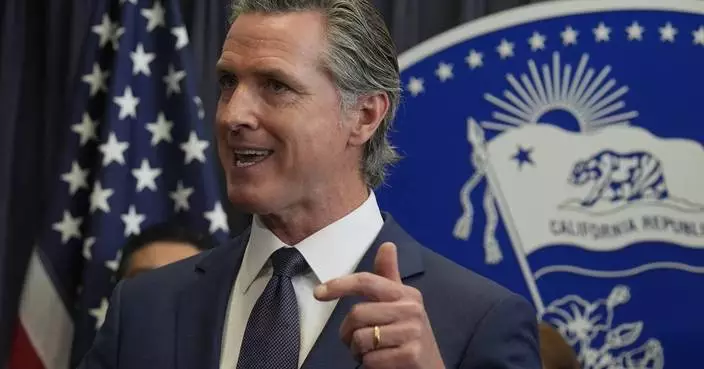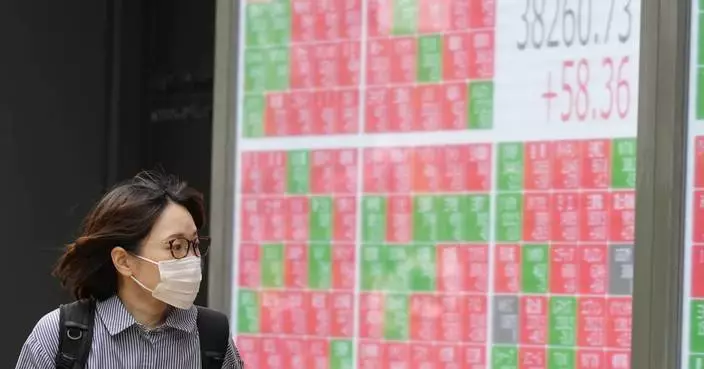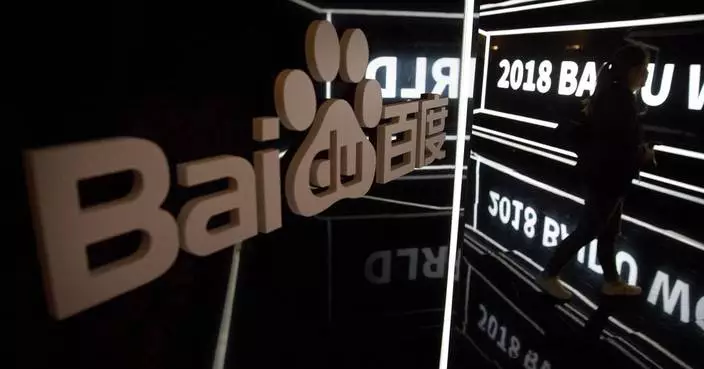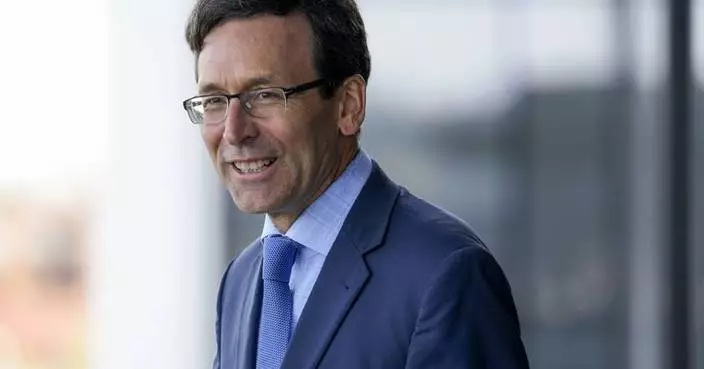Around twenty miles outside the center of London on an unassuming industrial estate, one of the UK and Europe’s biggest robot suppliers is busy packing robots and robot parts. It's a bustling and slightly chaotic workplace for a small but growing team.
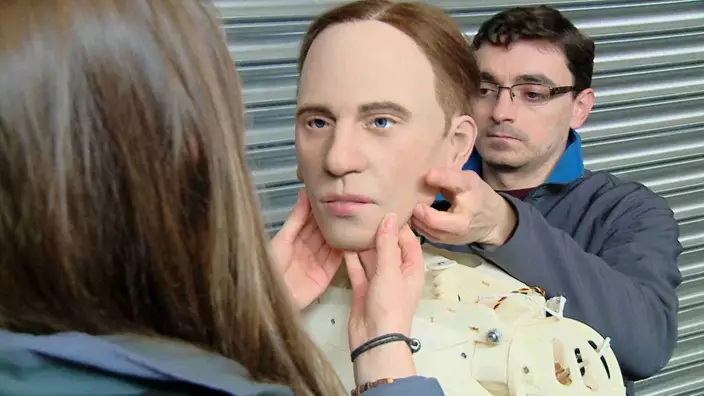
CGTN Photo
Robots of London supplies various robots, which are sourced from China, Japan, and Russia among other places. The company was founded just two years ago by Adam Kushner, who told CGTN that he realized following a business trip to Japan, “that it was something that in the future, at some point, people would want.”
Click to Gallery
Around twenty miles outside the center of London on an unassuming industrial estate, one of the UK and Europe’s biggest robot suppliers is busy packing robots and robot parts. It's a bustling and slightly chaotic workplace for a small but growing team.
Robots of London supplies various robots, which are sourced from China, Japan, and Russia among other places. The company was founded just two years ago by Adam Kushner, who told CGTN that he realized following a business trip to Japan, “that it was something that in the future, at some point, people would want.”
Kushner anticipates a 400-percent increase in growth over the next few years and says he takes calls daily from robot manufacturers in China, wanting to do business. But China is not only interested in the UK as a marketplace for its robots. It keeps a close eye on promising new artificial intelligence (AI) startups in the UK, as Beijing plans to become the world leader in AI by 2030. It’s estimated that a new AI start-up has been launched in the UK every week for the past three years. For British companies, close collaborations with Chinese partners offer opportunities to gain market access and financial backing.
Illumr founder Jason Lee estimates it will be around a year before the company is ready to scale up, however, he said he’s delighted to have already been in contact with the CSC group, who has promised to introduce him to big Chinese corporations.
China-Britain Business Fusion (CBBF) is a London-based consultancy group dedicated to bringing the China-UK AI sector together with a summit in China planned for 2018, following a successful event in London.
Having seen much of the competition, the supplier this year also decided to work on its own robot. Alfie, a somewhat life-like looking face on a robotic human body, is a work in progress, but it is hoped that one day he could compete with the robots being imported from Asia and beyond.
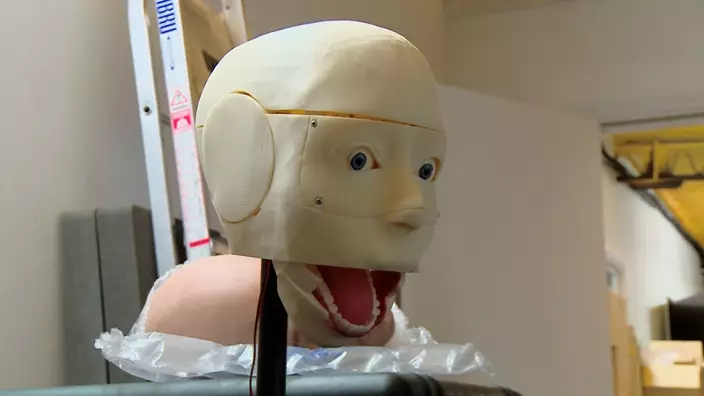
Robot parts lying around the Robots of London office. /CGTN Photo
Kushner anticipates a 400-percent increase in growth over the next few years and says he takes calls daily from robot manufacturers in China, wanting to do business. But China is not only interested in the UK as a marketplace for its robots. It keeps a close eye on promising new artificial intelligence (AI) startups in the UK, as Beijing plans to become the world leader in AI by 2030. It’s estimated that a new AI start-up has been launched in the UK every week for the past three years. For British companies, close collaborations with Chinese partners offer opportunities to gain market access and financial backing.
Illumr is an AI startup that has created a unique data analysis platform which can turn large data sets into three-dimensional patterns. The idea is that humans and AI can work together to identify never seen before patterns that will reveal new insights. Illumr has already benefited from an accelerator program part-funded by China’s third-largest private equity firm, CSC group, which aims to fuse UK technology with the Chinese market.
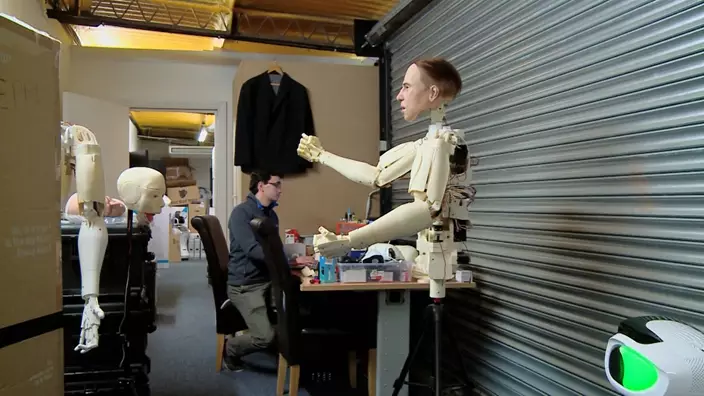
Robots of London staff working on Alfie. /CGTN Photo
Illumr founder Jason Lee estimates it will be around a year before the company is ready to scale up, however, he said he’s delighted to have already been in contact with the CSC group, who has promised to introduce him to big Chinese corporations.
“When we’re ready we’ve got already established links… it’s such a difficult market to enter, but when you’ve got that help at a senior level, it should be really good for us,” Lee told CGTN.
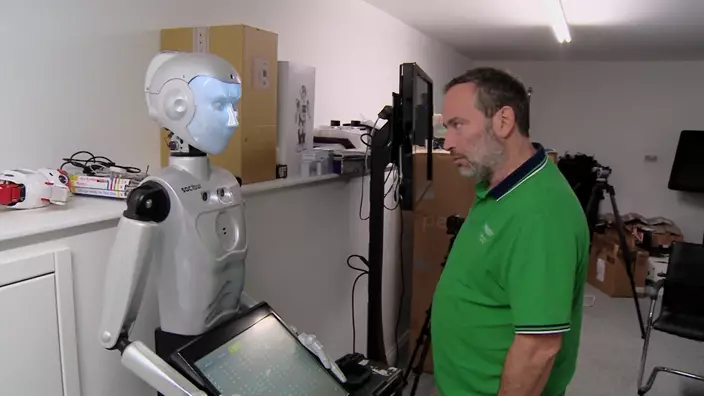
Adam Kushner, co-founder of Robots of London, examines a singing robot. /CGTN Photo
China-Britain Business Fusion (CBBF) is a London-based consultancy group dedicated to bringing the China-UK AI sector together with a summit in China planned for 2018, following a successful event in London.
"The future is very bright for the UK and China to collaborate. China has got a huge budget and that budgets mean that they can spend money into acquiring technology around the world but that technology is driven by the talents and that is what the UK can offer,” said Syrus Lohrasb, the founder of CBBF.
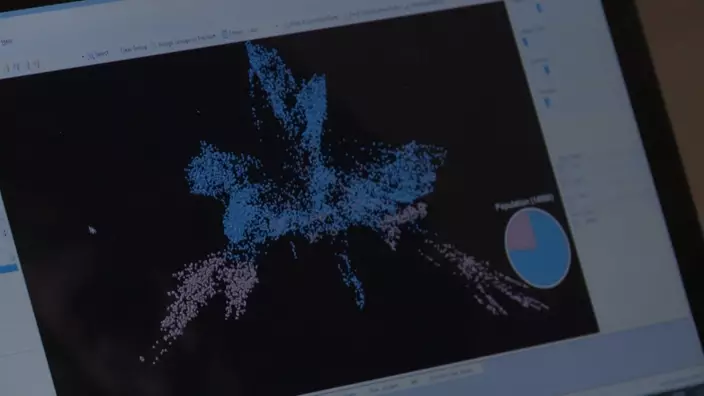
A view of the data analysis 3D pattern, an example of the work of Illumr. /CGTN Photo
TOKYO (AP) — Global shares traded higher Friday after a rally on Wall Street that pulled the S&P 500 back within 1% of its record.
In London, the FTSE 100 rose 0.8% to 8,448.34 as the government reported that the British economy bounced back strongly in the first three months of the year, bringing to an end to what economists termed a “technical recession.”
France's CAC 40 gained 0.8% in early trading to 8,253.19, while Germany's DAX added 0.8% to 18,830.43.
The future for the Dow Jones Industrial Average gained 0.3% while that for the S&P 500 rose 0.4%.
Japan’s benchmark Nikkei 225 rose 0.4% to finish at 38,229.11.
The Japanese Finance Ministry reported a record current account surplus for the fiscal year through March, as strong auto exports whittled down its trade deficit and the nation racked up solid returns on overseas investments.
Australia's S&P/ASX 200 rose 0.4% to 7,749.00 and South Korea's Kospi added 0.6% to 7,749.00.
Hong Kong's Hang Seng jumped 2.3% to 18,963.68, while the Shanghai Composite was little changed, inching up less than 0.1% to 3,154.55.
Chinese price data, expected Saturday, are being watched to see if the economy might be regaining momentum.
“Despite efforts, China has grappled with consumer deflation for about a year, presenting a formidable challenge that Beijing has yet to overcome,” said Stephen Innes, managing partner at SPI Asset Management.
On Thursday, the S&P 500 rose 0.5% and the Dow Jones Industrial Average gained 0.8%. The Nasdaq composite added 0.3%.
Federal Reserve Chair Jerome Powell said last week that the central bank remains closer to cutting its main interest rate than hiking it, despite a string of stubbornly high readings on inflation this year.
A cooler-than-expected jobs report on Friday has suggested the U.S. economy could manage to avoid being either too hot or too cold.
In other trading, benchmark U.S. crude rose 48 cents to $79.74 a barrel in electronic trading on the New York Mercantile Exchange. Brent crude, the international standard, added 41 cents to $84.29 a barrel.
The U.S. dollar rose to 155.71 Japanese yen from 155.50 yen.
The weak yen has been both a blessing and a worry for Japan, as it helps boost export earnings but chips away at purchasing power.
Expectations are growing for the Bank of Japan to start raising interest rates, although how much exactly and when remain unclear. The U.S. dollar was trading at 130 yen levels a year ago.
The euro inched up to $1.0786 from $1.0782.
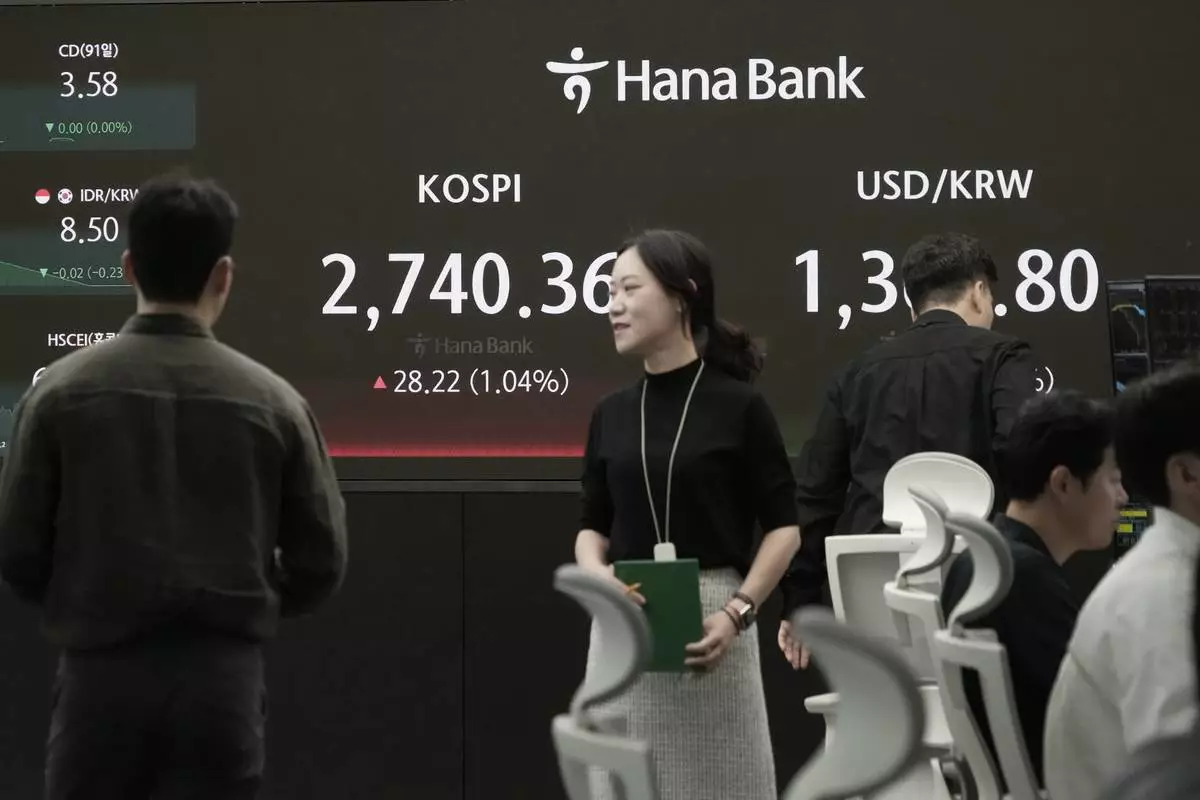
Currency traders pass by the screen showing the Korea Composite Stock Price Index (KOSPI), left, and the foreign exchange rate between U.S. dollar and South Korean won at the foreign exchange dealing room of the KEB Hana Bank headquarters in Seoul, South Korea, Friday, May 10, 2024. (AP Photo/Ahn Young-joon)
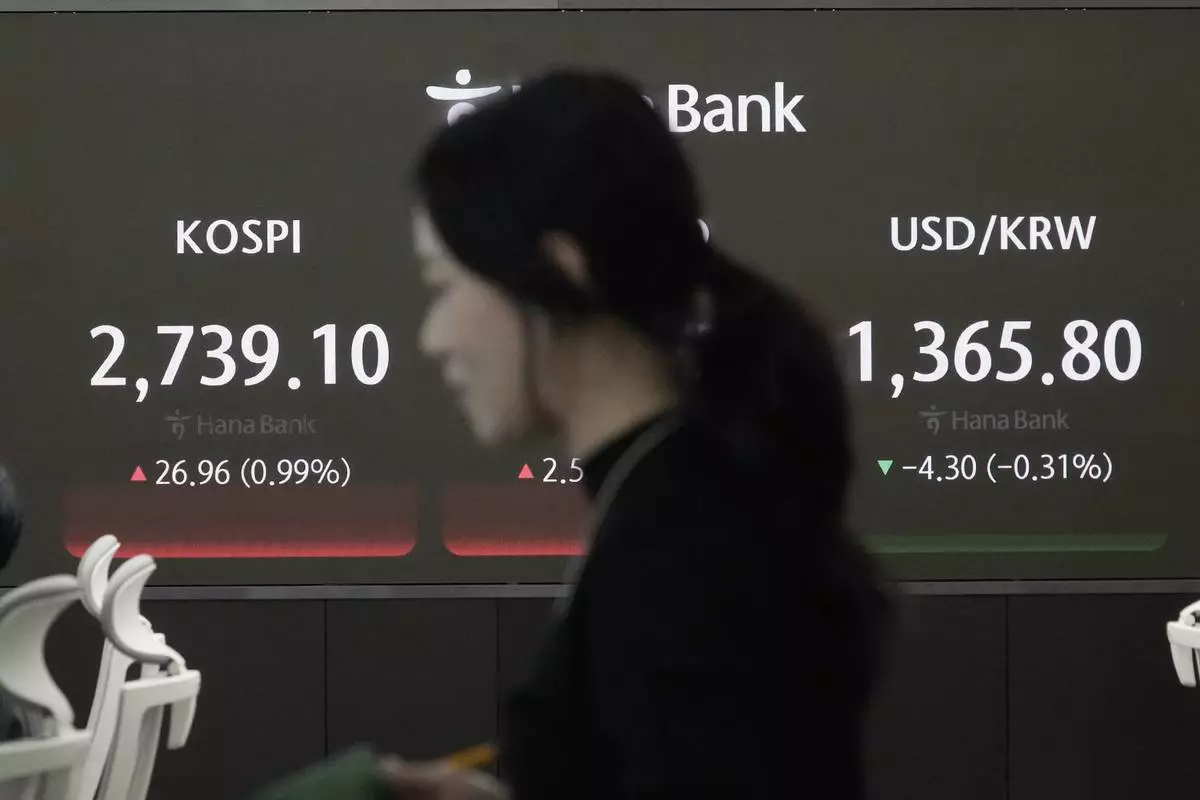
A currency trader passes by the screen showing the Korea Composite Stock Price Index (KOSPI), left, and the foreign exchange rate between U.S. dollar and South Korean won at the foreign exchange dealing room of the KEB Hana Bank headquarters in Seoul, South Korea, Friday, May 10, 2024. (AP Photo/Ahn Young-joon)

A currency trader works near the screen showing the Korea Composite Stock Price Index (KOSPI) at the foreign exchange dealing room of the KEB Hana Bank headquarters in Seoul, South Korea, Friday, May 10, 2024. (AP Photo/Ahn Young-joon)












